|
Books Should Be Free Loyal Books Free Public Domain Audiobooks & eBook Downloads |
|
|
Books Should Be Free Loyal Books Free Public Domain Audiobooks & eBook Downloads |
|
Fiction |
|---|
|
Book type:
Sort by:
View by:
|
By: Charles Alexander Eastman (1858-1939) | |
|---|---|
 Indian Child Life
Indian Child Life
The author was raised as an American Indian and describes what it was like to be an Indian boy (the first 7 chapters) and an Indian Girl (the last 7 chapters). This is very different from the slanted way the white man tried to picture them as 'savages' and 'brutes.'Quote: Dear Children:—You will like to know that the man who wrote these true stories is himself one of the people he describes so pleasantly and so lovingly for you. He hopes that when you have finished this book, the Indians will seem to you very real and very friendly... | |
By: Pauline Elizabeth Hopkins (1859-1930) | |
|---|---|
 Contending Forces
Contending Forces
Pauline Elizabeth Hopkins, despite an impressive record of productivity and creativity as a novelist, playwright, short fiction writer, editor, actress, and singer, is an African-American woman writer who has essentially been consigned to the dustbins of American literary history. Though contemporary with Frances Ellen Watkins Harper, Charles W. Chesnutt, and Paul Laurence Dunbar, Hopkins is only now beginning to receive the kind of critical attention that Harper has enjoyed for a slightly longer period and that Chesnutt and Dunbar have always had... | |
By: Mary T. Waggaman (1846-1931) | |
|---|---|
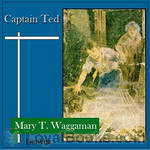 Captain Ted
Captain Ted
When tragedy hits his family, in the form of a sudden illness to his father, young Teddy Thornton is forced to leave school and find work to help support his family. Without his realization he is thrown into a world of crime and counterfeiting. Will he do the right thing, or will he unwittingly be drawn down the wrong path? And will the mystery of Heron Hall be solved? | |
By: F. M. Mayor (1872-1932) | |
|---|---|
 The Third Miss Symons
The Third Miss Symons
Miss Mayor tells this story with singular skill, more by contrast than by drama, bringing her chief character into relief against her world, as it passes in swift procession. Her tale is in a form becoming common among our best writers; it is compressed into a space about a third as long as the ordinary novel, yet form and manner are so closely suited that all is told and nothing seems slightly done, or worked with too rapid a hand. | |
By: Thomas Beer | |
|---|---|
 The Fair Rewards
The Fair Rewards
"The Fair Rewards" by Thomas Beer . . . is a really distinguished novel. The writing is far above the average: it has style and sophistication and personality, intermingled with a truly vivid show of imagination. It even borders on brilliancy, but it is a hard, cold, cynical sort of brilliancy that chills. It almost hurts . . . The title itself is indicative of cynicism. It is derived from Shakespeare's quotation, "These be the fair rewards of those that love," and it is an ironical reference, for Mark Walling, the blind, simple, loving idolater, in return for his great and unselfish devotion to Margot, reaps selfishness and ingratitude and lack of consideration... | |
By: Francis Coventry (1725-1754 or 1759) | |
|---|---|
 The History of Pompey the Little
The History of Pompey the Little
"Pompey, the son of Julio and Phyllis, was born A.D. 1735, at Bologna in Italy, a place famous for lap-dogs and sausages." At an early age he was carried away from the boudoir of his Italian mistress by Hillario, an English gentleman illustrious for his gallantries, who brought him to London.The rest of the history is really a chain of social episodes, each closed by the incident that Pompey becomes the property of some fresh person. In this way we find ourselves in a dozen successive scenes, each strongly contrasted with the others... | |
By: Cyrus Townsend Brady (1861-1920) | |
|---|---|
 And Thus He Came
And Thus He Came
These short stories, perhaps we might call them modern parables, are not the usual fare of warm and fuzzy Christmas stories (pleasing as those are) but rather life events and crises triggered by Christmas, present or imminent. Brady was a journalist, historian, adventure writer, and Episcopal priest. | |
By: Alice B. Emerson | |
|---|---|
 Ruth Fielding of the Red Mill
Ruth Fielding of the Red Mill
Brave, adventurous and loyal, recently-orphaned Ruth Fielding is sent to live with her estranged Uncle Jabez at the Red Mill in Cheslow, New York. A new town means making new friends, and the teenage Ruth quickly befriends the children of a wealthy merchant. But as the relationship between her and her uncle becomes strained and she attempts to become friends with a very disagreeable girl, will Ruth's cheery disposition be enough to get her through?This is the first of the Ruth Fielding series, with follows Ruth and her friends from adolescence into early adulthood. | |
 Ruth Fielding at Briarwood Hall
Ruth Fielding at Briarwood Hall
In this, the second book of the Ruth Fielding series, Ruth goes to boarding school with her best friend Helen. When they get there, Ruth starts her own sorority called the SweetBriars for the new girls. Her sweet group of girls conflicts with the two other sororities the Upedes and the Fussy Curls. In the midst of settling in to the new place, there is a campus rumor about a legend of the marble harp playing ominously at night. But when the French teacher is in a fright, will Ruth be able to solve this mystery?The Ruth Fielding series has influenced several other major series that came later, including Nancy Drew, the Dana Girls, and Beverly Gray. | |
By: Frances Trego Montgomery (1858-1925) | |
|---|---|
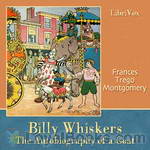 Billy Whiskers, the Autobiography of a Goat
Billy Whiskers, the Autobiography of a Goat
This delightful children's story can be enjoyed by kids and adults alike! A mischievous goat, Billy Whiskers, gets into trouble so often that the book could be named, "Billy Trouble Whiskers"! This humorous story will bring you many chuckles and give you a chance to get lost in Billy's adventures with childlike enthusiasm. From riding in a police car, to being a firehouse mascot, getting married, and finding himself a circus goat, Billy's adventures will certainly keep you entertained! (Introduction by Allyson Hester) | |
By: Zoe Anderson Norris | |
|---|---|
 The Way of the Wind
The Way of the Wind
From the comfort of the hills of Kentucky traveled Celia and her husband Seth to the desolate prairies of Kansas, where cyclones, tornadoes, and endless wind were to greet them. Always, there was the wind cutting across the plains as the young couple builds their home while working the soil, while Seth awaits the wise men of the east to begin building the magic city where he has staked his territory on the plains. But sometimes life plays cruel tricks upon us. Sometimes our hopes are dashed by happenstance... | |
By: Susanna Rowson (1762-1824) | |
|---|---|
 Charlotte Temple
Charlotte Temple
Charlotte Temple, a cautionary tale for young women, follows the unfortunate adventures of the eponymous heroine as she is seduced by a dashing soldier, Montraville. Influenced by both her lover and an unruly teacher at her boarding school, she is persuaded to run away to America, where she is eventually abandoned by Montraville after he becomes bored, leaving her alone and pregnant. First published in England in 1791, it went on to become America's bestselling novel, only being ousted by Harriet Beecher Stowe's Uncle Tom's Cabin. | |
By: Jim Kjelgaard (1910-1959) | |
|---|---|
 The Black Fawn
The Black Fawn
Bud Sloan was an orphan who had been 'sold out' of the orphanage to work on a farm once he'd been old enough to labor. The farm where he was to work was owned by an aging farmer and his wife who had raised a large family and were now left alone. One day, after his chores were done, Bud wandered into the woods nearby and with mouth agape, he noticed a newborn jet black fawn all alone and apparently confused in his new surroundings. Bud resolved that day that this baby fawn was just like himself, an orphan, and would be bound to him in spirit... | |
By: Percy Marks (1891-1956) | |
|---|---|
 The Plastic Age
The Plastic Age
The Plastic Age (1924) is a novel by Percy Marks, which tells the story of co-eds at a fictional college called Sanford. With contents that covered or implied hazing, partying, and "petting", the book sold well enough to be the second best-selling novel of 1924. The following year, it was adapted into a film of the same name, starring Clara Bow. | |
By: Leonid Nikolayevich Andreyev (1871-1919) | |
|---|---|
 The Seven Who Were Hanged
The Seven Who Were Hanged
"I am very glad that "The Story of the Seven Who Were Hanged" will be read in English. The misfortune of us all is that we know so little, even nothing, about one another—neither about the soul, nor the life, the sufferings, the habits, the inclinations, the aspirations of one another. Literature, which I have the honor to serve, is dear to me just because the noblest task it sets before itself is that of wiping out boundaries and distances."-- Leonid Andreyev, in a letter to Herman Bernstein | |
By: Sōseki Natsume (1867-1916) | |
|---|---|
 Botchan
Botchan
Botchan is the story of a young math teacher from Tokyo whose first assignment takes him to a middle school in the country side. His arrival there is not very lucky: The pupils are bound to test his perseverance and cheerily comments every one of his perceived missteps. In the teacher's room, he soon finds himself in the middle of an intrigue between the jovial "Porcupine" and the fat "Hubbard Squash" on one side, and the effeminate "Red Shirt" and his follower "Clown" on the other. Will Botchan choose the right side in the end? Botchan - with morality as the main theme - is one of the most popular novels in Japan... | |
By: H. C. Bailey (1878-1961) | |
|---|---|
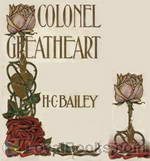 Colonel Greatheart
Colonel Greatheart
This is an unusual story of the English Civil War. There is a good account of the Battle of Newbury, and many historic figures appear: Cromwell (very prominent), Ireton, Prince Rupert, Charles I, Fairfax, and Lambert. The setting for this tale of men and arms is taken from the stirring days of the Bavaliers and the Roundheads, of Puritans and the so-called malignants; but the machines of war are rather in the background, while in the spotlight is a witching woman, a conqueror of hearts and a marker of destinies. The story tells of a woman's ambition that "urges valiant men to perilous deeds". | |
By: John Neihardt | |
|---|---|
 The Song of Hugh Glass
The Song of Hugh Glass
This poem tells a story that begins in 1823 - just after the Leavenworth campaign against the Arikara Indians - and follows an expedition of Major Andrew Henry during a series of arduous journeys over the Trans-Missouri region.The poem focuses upon the relationship between two trappers - Hugh Glass and Jamie - who, after fighting and hunting together, consequently develop a close friendship. The poem revolves around the betrayal of Hugh by Jamie: who leaves Hugh alone "as good as dead" to die by the Missouri... | |
By: Edward Everett Hale (1822-1909) | |
|---|---|
 Christmas Eve and Christmas Day
Christmas Eve and Christmas Day
This is a collection of ten Christmas Stories, some of which have been published before. I have added a little essay, written on the occasion of the first Christmas celebrated by the King of Italy in Rome. | |
 Man Without A Country And Other Tales
Man Without A Country And Other Tales
Edward Everett Hale (1822 – 1909) was an American author, historian and Unitarian clergyman. Hale first came to notice as a writer in 1859, when he contributed the short story "My Double and How He Undid Me" to the Atlantic Monthly. He soon published other stories in the same periodical. His best known work was "The Man Without a Country", published in the Atlantic in 1863 and intended to strengthen support in the Civil War for the Union cause in the North. Though the story is set in the early 19th century, it is an allegory about the upheaval of the American Civil War... | |
By: Mary Louisa Molesworth (1839-1921) | |
|---|---|
 The Palace in the Garden
The Palace in the Garden
The Palace in the Garden is the engaging story of three orphans sent to live in the mysterious country cottage of Rosebuds. The inquisitive children piece together the unexpected mystery of the Palace in the garden & all that goes with it. The story has a few twists. This book put me in mind of the Secret Garden.(Introduction by ilianthe) | |
By: Charles Norris Williamson | |
|---|---|
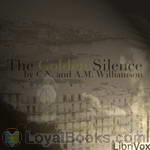 The Golden Silence
The Golden Silence
Trying to get away from an engagement he had got himself into more or less against his will, Stephen Knight travels to Algiers to visit his old friend Nevill. On the Journey there he meets the charming and beautiful Victoria. She is on her way to Algiers to search for her sister, who had disappeared years ago after marrying an Arab nobleman. With the support of his friend, Stephen Knight decides to help the girl - but when she also disappears, the adventure begins... | |
By: Arthur Griffiths (1838-1908) | |
|---|---|
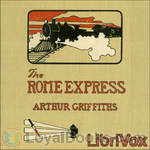 The Rome Express
The Rome Express
The passengers in the sleeping car of the Rome Express were just woken and informed that they will reach Paris soon, and a general bustle fills the train. Only one passenger cannot be awoken by the porter, no matter how loudly he knocks on the compartment door. At last, when the door is forced open, the occupant of the compartment is found dead - stabbed to the heart! The murderer must be found among the passengers... | |
By: May Sinclair (1863-1946) | |
|---|---|
 Audrey Craven
Audrey Craven
In May Sinclair’s remarkable first novel, Audrey Craven is a beautiful young woman who has by her idiosyncracies acquired a thoroughly undeserved reputation for originality. In fact, Audrey is a shallow, selfish, malleable person of negligible intelligence, with a fastidious horror of anyone who might be considered a nobody. Her pursuit of the stimulation of extraordinary minds (and her persistent fantasy of being somebody’s Muse) brings her into contact with serious women and men representing the profoundest passions of art, religion, science, and love... | |
By: William H. Hudson (1841-1922) | |
|---|---|
 A Crystal Age
A Crystal Age
A Crystal Age is a utopian novel written by W. H. Hudson, first published in 1887. The book has been called a "significant S-F milestone" and has been noted for its anticipation of the "modern ecological mysticism" that would evolve a century later. | |
By: S. Baring-Gould (1834-1924) | |
|---|---|
 The Book of Ghosts
The Book of Ghosts
Reverend Sabine Baring-Gould (1834-1924) was an English hagiographer, antiquarian, novelist and eclectic scholar. During his life, he published more than 100 books, among them this collection of ghost stories. | |
By: Martin Andersen Nexø (1869-1954) | |
|---|---|
 Pelle the Conqueror
Pelle the Conqueror
When the first part of "Pelle Erobreren" (Pelle the Conqueror) appeared in 1906, its author, Martin Andersen Nexo, was practically unknown even in his native country, save to a few literary people who knew that he had written some volumes of stories and a book full of sunshiny reminiscences from Spain. And even now, after his great success with "Pelle," very little is known about the writer. He was born in 1869 in one of the poorest quarters of Copenhagen, but spent his boyhood in his beloved island Bornholm, in the Baltic, in or near the town, Nexo, from which his final name is derived... | |
By: Dorothy Richardson (1873-1957) | |
|---|---|
 Pointed Roofs
Pointed Roofs
Miriam Henderson is one of what novelist Dolf Wyllarde (in her great work, The Pathway of the Pioneer) termed "nous autres," i.e., young gentlewomen who must venture forth and earn their living after their fathers have been financially ruined. Also, she has read Villette; she thus applies for and is offered a job teaching conversational English at a girls' school, albeit in Germany rather than France. Pointed Roofs describes her year abroad, as she endeavors to make her way in the hotbed of seething female personalities that populate the school, overseen by her employer, the formidable Fraulein... | |
By: Lord George Gordon Byron (1788-1824) | |
|---|---|
 Don Juan, Cantos 13 -16
Don Juan, Cantos 13 -16
These are the last four Cantos of his mock epic that Byron completed in the year before his death at the age of 36 in Messolonghi, Greece, where he had gone to fight for the nationalists against the Ottoman Empire. Juan, now in England, is invited to spend the autumn with a hunting party at the ancient country seat of Lord Henry and Lady Adeline Amundeville. There, he meets the most intriguing of the Byronic heroines, Aurora Raby, and is visited by a ghost with ample breasts (!). That is the narrative outline but hardly the focus of the last Cantos... | |
By: Charles Waddell Chesnutt (1858-1932) | |
|---|---|
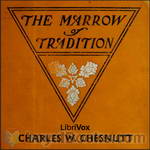 The Marrow of Tradition
The Marrow of Tradition
In The Marrow of Tradition, Charles W. Chesnutt--using the 1898 Wilmington, North Carolina massacre as a backdrop--probes and exposes the raw nerves and internal machinery of racism in the post-Reconstruction-era South; explores how miscegenation, caste, gender and the idea of white supremacy informed Jim Crow laws; and unflinchingly revisits the most brutal of terror tactics, mob lynchings. (Introduction by James K. White) | |
 House Behind the Cedars
House Behind the Cedars
In this, Chesnutt's first novel, he tells the tragic story of love set against a backdrop of racism, miscegenation and “passing” during the period spanning the antebellum and reconstruction eras in American history. And through his use of the vernacular prevalent in the South of that time, Chesnutt lent a compassionate voice to a group that America did not want to hear. More broadly, however, Chesnutt illustrated, in this character play, the vast and perhaps insurmountable debt this country continues to pay for the sins of slavery. | |
 Colonel's Dream
Colonel's Dream
In this novel, Chesnutt described the hopelessness of Reconstruction in a post-Civil War South that was bent on reestablishing the former status quo and rebuilding itself as a region of the United States where new forms of "slavery" would replace the old. This novel illustrated how race hatred and the impotence of a reluctant Federal Government trumped the rule of law, ultimately setting the stage for the rise of institutions such as Jim Crow, lynching, chain gangs and work farms--all established with the intent of disenfranchising African Americans. | |
By: A.P. Herbert (1890-1971) | |
|---|---|
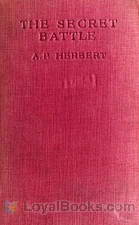 The Secret Battle
The Secret Battle
Like many soldiers at the beginning of their military careers, Harry Penrose has romantic ideas of climbing the ranks and attaining hero status. However, while stationed at Gallipoli, the realities of war begin to take their toll on Penrose, not only physically, but also mentally where the war has become a 'battle of the mind.' This is his story as related by a fellow soldier, as well as the story of the campaign at Gallipoli which is vividly portrayed from the author's own personal experiences.During his tenure as an officer, Penrose slowly asserts himself; the war takes a toll on his personality, but he begins to live up to his early dreams of heroism... | |
By: Helen Leah Reed (1860-1926) | |
|---|---|
 Brenda, Her School and Her Club
Brenda, Her School and Her Club
"Brenda was used to getting her own way. Her parents and older sisters spoiled her, her friends followed her lead, servants obeyed her, and she was truly beautiful. That was so, until her cousin Julia (who is everything that she is not) came to live with her family. And that's when our book starts." | |
By: Ellis Meredith (1865-1955) | |
|---|---|
 The Master-Knot of Human Fate
The Master-Knot of Human Fate
A tale of two people, and their search for answers to unknown questions. Adam and Robin find themselves inexplicably alone after an apparent natural cataclysm, and are compelled to learn how to survive, how to endure, but most importantly to themselves, how to enjoy, understand their new roles in life, and understand each other. (Introduction by Roger Melin) | |
By: Marie Corelli (1855-1924) | |
|---|---|
 A Romance of Two Worlds
A Romance of Two Worlds
A Romance of Two Worlds starts with a young heroine telling her story of a debilitating illness that includes depression and thoughts of suicide. Her doctor is unable to help her and sends her off on a holiday where she meets a mystical character by the name of Raffello Cellini, a famous Italian artist. Cellini offers her a strange potion which immediately puts her into a tranquil slumber, in which she experiences divine visions. | |
By: A.E.W. Mason | |
|---|---|
 At the Villa Rose
At the Villa Rose
Harry Wethermill, the brilliant young scientist, a graduate of Oxford and Munich, has made a fortune from his inventions, and is taking a vacation at Aix-les-Bains. There he meets, and immediately falls in love with, the young and beautiful Celia Harland, who serves as companion to the aging but warm-hearted Madam Dauvray of Paris. All this is observed by Julius Ricardo, a retired financier from the City of London, who spends every August at Aix, expecting there to find a pleasant and peaceful life... | |
By: A. E. W. Mason (1865-1948) | |
|---|---|
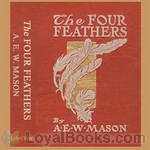 The Four Feathers
The Four Feathers
The Four Feathers is a 1902 adventure novel by British writer A.E.W. Mason that has inspired many films of the same title.The novel tells the story of British officer, Harry Feversham, who resigns his commission in the East Surrey Regiment just prior to Sir Garnet Wolseley's 1882 expedition to Egypt to suppress the rising of Urabi Pasha. He is faced with censure from three of his comrades for cowardice, signified by the delivery of three white feathers to him, from Captain Trench and Lieutenants Castleton and Willoughby, and the loss of the support of his Irish fiancée, Ethne Eustace, who presents him with the fourth feather... | |
By: Lord Redesdale (1837-1916) | |
|---|---|
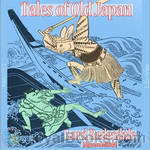 Tales of Old Japan
Tales of Old Japan
Tales of Old Japan by Lord Redesdale is a collection of short stories focusing on Japanese life of the Edo period (1603 - 1868). It contains a number of classic Japanese stories, fairy tales, and other folklore; as well as Japanese sermons and non-fiction pieces on special ceremonies in Japanese life, such as marriage and harakiri, as observed by Lord Redesdale. The best know story of these is "The Forty-seven Ronins" a true account of samurai revenge as it happened at the beginning of 18th century Japan... | |
By: Henry Oyen (1882-1921) | |
|---|---|
 The Snow-Burner
The Snow-Burner
The Snow-Burner is what the Native Americans called Reivers, and it was a rough and tumble life in the land where Reivers chose to live up to his name. The name was attributed to Reivers upon his proof after arriving in the north country because of his ability to defeat all perceived enemies in whatever means was necessary; whether by brute force and tough action, or by sheer cunning which he had gained living in the city in his earlier days. When assigned to oversee a group of foreigners in a work camp, he treated them with utter cruelty... | |
By: Sister Mary Jean Dorcy (1914-1988) | |
|---|---|
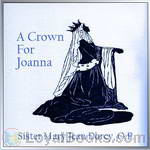 A Crown for Joanna
A Crown for Joanna
She was born a princess, heir to her father’s kingdom of Portugal, and she might at will have reigned from almost any throne in Europe. But instead of this, she made what to her world seemed a thoroughly mad choice – for she chose to have a throne in heaven. Today those scepters are dust which she would not accept, and as Blessed Joanna of Portugal she possesses a throne imperishable… This children’s biography of Blessed Joanna of Portugal was written by Sister Mary Jean Dorcy, a Catholic Dominican Nun... | |
By: Marie de France | |
|---|---|
 French Mediaeval Romances from the Lays of Marie de France
French Mediaeval Romances from the Lays of Marie de France
The tales included in this little book of translations are derived mainly from the "Lays" of Marie de France. I do not profess them to be a complete collection of her stories in verse. The ascription varies. Poems which were included in her work but yesterday are withdrawn to-day, and new matter suggested by scholars to take the place of the old. I believe it to be, however, a far fuller version of Marie's "Lays" than has yet appeared, to my knowledge, in English. Marie's poems are concerned chiefly with love... | |
By: H. Beam Piper and John McGuire (1904-1964) | |
|---|---|
 Hunter Patrol
Hunter Patrol
World War IV has dragged on for 12 years and the whole world is drained and tired of the killing and destruction. One man, a high school chemistry teacher from St. Louis in the USA, is serving his latest forced stint in the UN forces when something strange happens to him. He dies but yet he doesn't. What if you had the power to bring peace to the entire world? What would you do? This story explores a frightening and strange journey into the murky depths of human needs and desires and how they can twist and turn back upon us. | |
By: A. E. W. Mason | |
|---|---|
 Running Water
Running Water
Although A.E.W. Mason is best known for The Four Feathers, an adventure novel of 1902 set in Egypt and the Sudan (and filmed several times), he was a prolific and popular writer of the period. Running Water, published in 1907, is, like its predecessor, a tale of romantic adventure. Though much of the story takes place in England, the real setting here is in the high Alps, in the range of Mont Blanc near Chamonix and Courmayeur. Here it is that Captain Hilary Chayne arrives, having spent the prior... | |
By: Agnes Repplier (1855-1950) | |
|---|---|
 Americans and Others
Americans and Others
A collection of sometimes biting, always clever commentaries on some of life's foibles -- as apt today as when Ms. Repplier wrote them in 1912. Though less know to modern readers, Repplier was in her prime ranked among the likes of Willa Cather. Note: Section 13 contains the word niggards. I put it in print here so that it will not be mistaken for a racial epithet when heard. (written by Mary Schneider) | |
By: Emma Wolf (1865-1932) | |
|---|---|
 Other Things Being Equal
Other Things Being Equal
Ruth Levice, the daughter of a rich San Francisco Jewish merchant, meats Dr. Herbert Kemp, and they slowly fall in love. However, she is Jewish and he is not. Can love overcome such an obstacle? And what is more important, duty or love? | |
By: E.D.E.N. Southworth (1819-1899) | |
|---|---|
 The Missing Bride
The Missing Bride
Prepare yourself for a journey, full of adventures and plot twists which will keep you guessing until the very end. This is psychological romance at its best. In the war of 1814, an American heiress falls in love with a British officer. This ill-fated marriage brings together a large group of interesting people who would never have met in other circumstances. | |
By: Mary Jane Holmes (1828-1907) | |
|---|---|
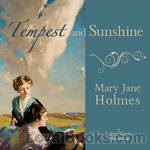 Tempest and Sunshine
Tempest and Sunshine
Tempest and Sunshine is the first book written by Mary Jane Holmes. Set in the pre-Civil War south, it follows the struggles and romances of two sisters, as different as night and day; blonde Fanny and dark haired Julia. (Introduction by jedopi) | |
By: Edric Vredenberg (1860-?) | |
|---|---|
 My Book Of Favourite Fairy Tales
My Book Of Favourite Fairy Tales
This is a collection on well-known, favorite fairy stories, most of which we all grew up with. They were edited and retold in this volume. | |
By: Robert Henry Newell (1836-1901) | |
|---|---|
 The Orpheus C. Kerr Papers
The Orpheus C. Kerr Papers
These are a collection of humorous "letters" written by a fictional character to a relation in the north during the Civil War. They were published regularly in the New York Mercury Sunday newspaper for the four years of the war. In the letters, Newell pokes fun at northern generals, politicians, and has hard things to say about southerners. Although Newell is rarely serious, I imagine the letters reflect the bitterness and frustration of many northerners at the time. (Introduction by Margaret) | |
By: Kate M. Foley | |
|---|---|
 Five Lectures on Blindness
Five Lectures on Blindness
The [five] lectures were written primarily to be delivered at the summer sessions of the University of California, at Berkeley and at Los Angeles, in the summer of 1918. . . they are the outgrowth of almost a quarter of a century spent in work for the blind, and were written from the standpoint of a blind person, seeking to better the condition of the blind. They were addressed not to the blind, but to the seeing public, for the benefit that will accrue to the blind from a better understanding of their problems. (Extract from the Forward by Milton J. Ferguson) | |
By: H. C. Bailey (1878-1961) | |
|---|---|
 The Highwayman
The Highwayman
A romance and adventure novel, set in England during the reign of Queen Anne. The book is much unlike the author's later detective short stories. The actual book is difficult to locate and appears to have been forgotten. It is not even listed by Wiki as part of the author's work, nevermind have any information on the book itself. | |
By: Florence Holbrook (1860-1932) | |
|---|---|
 Dramatic Reader for Lower Grades
Dramatic Reader for Lower Grades
Despite the title's bland sounding name, this book is a charming collection of 16 plays for children. These little plays—well-known stories done into dialogue—were written for children who like to imagine themselves living with their favorite characters in forest, in palace, or in fairyland. Included are Cinderella, Robin Hood, William Tell, Hansel and Gretel and many more. | |
 Book of Nature Myths
Book of Nature Myths
This is a book of myths told by the Indians of North America to their children. They could be compared to present day Fairy Tales. | |
By: Edward Eggleston (1837-1902) | |
|---|---|
 Hoosier Schoolmaster
Hoosier Schoolmaster
"Want to be a school-master, do you? You? Well, what would you do in Flat Crick deestrick, I'd like to know? Why, the boys have driv off the last two, and licked the one afore them like blazes. You might teach a summer school, when nothin' but children come. But I 'low it takes a right smart man to be school-master in Flat Crick in the winter. They'd pitch you out of doors, sonny, neck and heels, afore Christmas." | |
By: Howard Overing Sturgis (1855-1920) | |
|---|---|
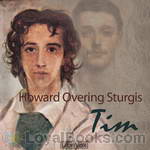 Tim
Tim
The first of only three novels by English author Howard Overing Sturgis, the son of wealthy American expatriates and a close friend of Henry James, Tim portrays a sensitive young boy’s affection for an older boy. (Introduction by Dorlene Kaplan) | |
By: Friedrich de la Motte Fouqué (1777-1843) | |
|---|---|
 Sintram and His Companions
Sintram and His Companions
Friedrich de la Motte Fouque, also the author of Undine, was a German Romantic writer whose stories were filled with knights, damsels in distress, evil enchantments, and the struggle of good against overpowering evil. 'My strength is as the strength of ten, Because my heart is pure.' Fouque blends the Romantic love for nature and ancient chivalry while telling a powerful story about a young man who yearns for that which he can never attain. | |
By: Guy Boothby (1867-1905) | |
|---|---|
 Bid For Fortune; Or, Dr Nikola's Vendetta
Bid For Fortune; Or, Dr Nikola's Vendetta
Guy Newell Boothby (1867 – 1905) was a prolific Australian writer. He moved to London in 1894 and became most well-known for his Dr.Nikola mysteries. This book is the first in a series of five and introduces the good doctor himself. Dr Nikola Is a criminal mastermind with an occult twist and like much fiction of that era this book and the following are more about how others fall under his spell and into his web. Here we have an adventure and love story that sweeps us from Australia, the South Seas, the Middle East and rural Hampshire with our lovestruck hero constantly battling against Dr Nikola and his cohorts... | |
By: Joseph Crosby Lincoln (1870-1944) | |
|---|---|
 Cape Cod Stories
Cape Cod Stories
This book (eleven short stories) was also published under the title of “The Old Home House”. Joseph Crosby Lincoln (1870 – 1944) was an American author of novels, poems, and short stories, many set in a fictionalized Cape Cod. Lincoln's work frequently appeared in popular magazines such as the Saturday Evening Post and The Delineator.... Lincoln claimed that he was satisfied "spinning yarns" that made readers feel good about themselves and their neighbors. Two of his stories have been adapted to film... | |
By: Gertrude Atherton (1857-1948) | |
|---|---|
 Rezanov
Rezanov
This novel by the prolific Californian author Gertrude Horn Atherton is based on the real life story of Nikolai Rezanov, a man who, in 1806, pushed for the Russian colonization of Alaska and California. "Not twenty pages have you turned before you know this Rezanov, privy councilor, grand chamberlain, plenipotentiary of the Russo-American company, imperial inspector of the extreme eastern and northwestern dominions of his imperial majesty Alexander the First, emperor of Russia—all this and more, a man... | |